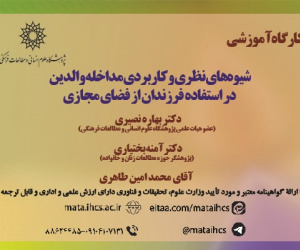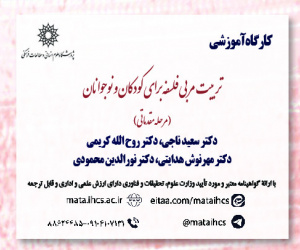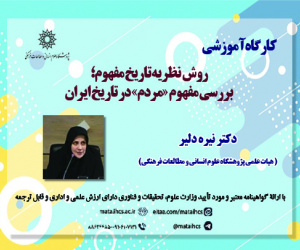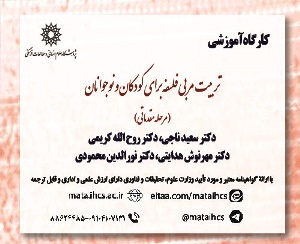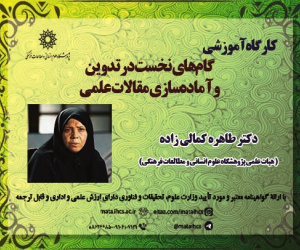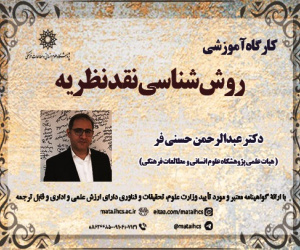واکاوی الگوهای فضاهای آستانه ای در بافت قدیم شهر بابل بر اساس نظریات الکساندر (مقاله علمی وزارت علوم)
درجه علمی: نشریه علمی (وزارت علوم)
آرشیو
چکیده
بیان مسئله: به مرور زمان از اواسط دوره قاجار تا دهه اول حکومت پهلوی، فضاهای عمومی و خصوصی، سلسله مراتب فضایی بین این دو و کالبدشان تغییر یافته و سبکی تلفیقی به وجود آمده است. یکی از فضاهایی که دستخوش تغییرات شده، فضای آستانه ای است که به عنوان یک مفهوم و کالبد، می تواند طیف وسیعی از مفاهیم مرتبط با عرف و فرهنگ را در برگیرد و فضا را واجد کیفیت کند. در باب اهمیت فضای آستانه ای می توان به دردسترس بودن فضای عمومی و ادغام آن با فضای خصوصی و ارتباط آن با کیفیت محیط شهری اشاره کرد تا جایی که کریستوفر الکساندر در مجموعه کتاب های سرشت نظم به مفاهیمی از حوزه معماری اشاره دارد که یکی از آنها مفهوم پیچیده آستانه است. هدف پژوهش: هدف از این مقاله، بررسی طبقه همکف و اول در مناطق مسکونی از منظر ارتباط با فضای عمومی در مقیاس ساختمان و همچنین ارتباط بین محلات و ساختمان ها با یکدیگر در مقیاس خیابان و انطباق آن با نظریات کریستوفر الکساندر در زمینه آستانه است. ازاین رو این پژوهش عمدتاً بر فضاهای آستانه ای تمرکز می کند و الگوهای بین این دو مؤلفه را مبتنی بر نظریه کریستوفر الکساندر بررسی می کند. روش پژوهش: فرایند این پژوهش کیفی است و داده های آن با بررسی ادبیات موجود، مصاحبه و مطالعه مدارک ثبت شده (اسناد، نقشه ها و تصاویر)، مشاهده شخصی، عکاسی، ترسیم و تحلیل وضعیت موجود فضاهای آستانه ای جمع آوری شده است. بخش تاریخی شهر بابل در استان مازندران به عنوان مطالعه موردی این پژوهش انتخاب شده است. نتیجه گیری: یافته های پژوهش نشان می دهد که سلسله مراتب دسترسی به فضای خصوصی خانه از فضای عمومی شهری و ارتباط بین محلات مسکونی در دوران قاجار باوجود تأثیر مدرنیته بر معماری آن دوران، منطبق بر نظریه الکساندر و متناسب و درخور با عرف، فرهنگ و نیازهای ساکنان بوده است.Analysis of Threshold Space Patterns in the Historic Fabric of Babol Based on Alexander’s Theories
Problem statement: Over time, from the mid-Qajar period to the first decade of the Pahlavi era, public and private spaces, the spatial hierarchies between these two, and their forms underwent transformations, leading to the emergence of a hybrid style. One of the spaces that has experienced such transformations is the threshold space. As both a concept and a physical structure, the threshold space can encompass a wide range of meanings connected to customs and culture, imbuing the space with distinctive qualities. The significance of threshold spaces lies in their accessibility to public spaces, their integration with private spaces, and their role in shaping the quality of the urban environment. Christopher Alexander, in his Nature of Order series, refers to this concept and highlights the importance of thresholds as a sophisticated architectural element.Research objective: The purpose of this article is to analyze the ground and first floors of residential areas in terms of their relationship with public spaces on the scale of buildings, as well as the connections between neighborhoods and buildings on the scale of streets. The study aims to align these findings with Christopher Alexander’s theories on thresholds. Accordingly, this research primarily focuses on threshold spaces and investigates the patterns between these two components based on Alexander’s theoretical framework.Research method: The methodology of this research is qualitative. Data was collected through desk research, interviews, analysis of historical documents (e.g., records, maps, and photographs), personal observation, photography, mapping, and analysis of the current state of threshold spaces. The historical core of Babol city, located in Mazandaran Province, was selected as the case study for this research.Conclusion: The findings reveal that, during the Qajar era, the hierarchical access to private spaces from urban public spaces, as well as the connections between residential neighborhoods, aligned with Christopher Alexander’s theory. Spatial arrangements were appropriate to and consistent with the customs, culture, and needs of the inhabitants, despite the influences of modernity on the architecture of that period.
